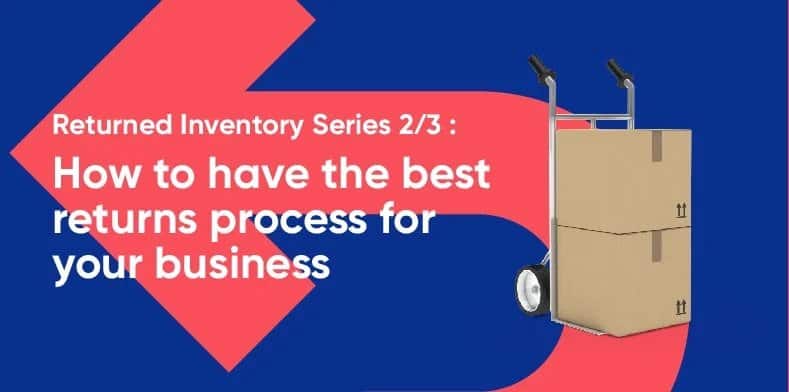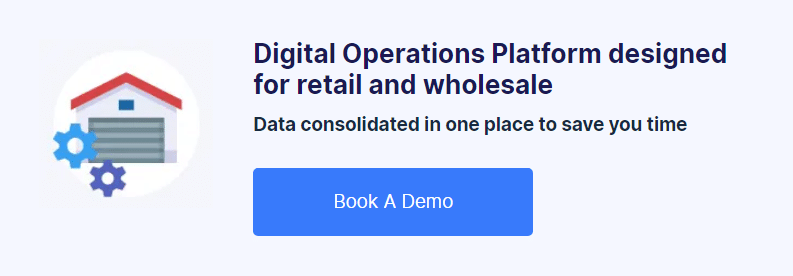This is the second part of a mini-series about returned inventory. Catch up with part 1 or skip straight ahead to part 3.
With 89% of American shoppers claiming they would shop again from an online store if treated to a positive returns process, we know that streamlined and hassle-free returns are a great competitive differentiator. For the modern retailer focused on growth, a streamlined returned inventory process should not be an afterthought, but be at the forefront of any growth activities and strategies. So, how do you implement and improve your returns processes without reducing your margins?
Today, we’ll focus on the different returns processes you can implement, the pros and cons involved with each and how you can keep things streamlined even after goods have been received back into your warehouse.
Returned Inventory Process #1: Authorized Returns
If you require your customers to call or email in their return requests, we refer to these as ‘authorized returns’.
Pros
- You have an opportunity to speak to your customer and provide personalized service.
- Speaking to your customers also gives you the opportunity to cross and upsell further products.
- You and your warehouse team have a view of inventory due back to the warehouse.
Cons
- More man hours spent – taking the call and sending the return instructions can put unnecessary stress on your customer service team.
- If you deal with a high volume of returns (e.g. apparel, which averages 25%-50% returned), this could require a full team of people to manage.
Returned Inventory Process #2: Automatic / Blind Returns
If you opt to make it as simple as possible for yourself and your customers, you ensure the customer can initiate the returns process themselves. You can do this by either including a return slip and free shipping labels in the original shipment, or by allowing the customer to print a returns slip direct from your website. This is known as an ‘automatic’ or ‘blind return’.
Pros
- Less man hours spent – your staff do not need to get involved until you physically receive the returned inventory.
- An easier returns process will result in happier customers who are more likely to return and shop with you again.
Cons
- An easier returns process could result in a higher rate of returns.
- You don’t have a view of the incoming inventory until it has arrived, affecting you if you’re planning on marking down your inventory line for a quick turnover.
Returned Inventory: Received Goods
Now that we’ve established the different types of returned inventory processes you can adopt in your business, you need to start thinking about how to keep your processes streamlined once goods have arrived in your warehouse.
Receiving returned inventory should initiate actions across various departments in your business, which can be extremely complex if you are using separate systems to manage your inventory and accounts.
Product handling
Once received, the products need to be checked to decide:
- Are they good for resale and therefore need to be ‘re-stocked’?
- Do they require repair?
- Or should they be returned to the vendor and tracked?
Inventory management
Inventory levels require updating to:
- Increase inventory or write off in your inventory management system.
- Update all channels, such as ecommerce stores, marketplaces and physical stores.
Customer service
Decide what your customer requires, including:
- Do they need a refund? (This requires a payment to be made to the customer).
- Do they need a replacement or alternative product? (This requires a new pick in the warehouse).
- Or should you credit them? (This requires an issue to be logged and credit to be applied to their account).
Accounting for returns
All of the above transactions affect the financials of the business and each part needs to be accounted for, including:
- Adding the inventory asset to the balance sheet.
- Recording the write off in the income statement.
- Recording and reconciling the refund from the bank to the customer.
- Tracking the credit balance the customer holds (as a liability on your balance sheet).
- Crediting the original sale on the income statement.
- Reversing the cost of sale in the income statement.
- Reversing the sales tax collected and the tax liability.
When processing returned inventory, there are debits and credits everywhere in your accounting and many different workflows you need to ensure are streamlined and efficient. If using a great omnichannel retail system like Brightpearl, these workflows can start to become more automated and seamless even as you grow and expand the business.
Decide which returned inventory process works best for you and your customers, and implement a great system to support the seamless, slick returned inventory processes you’re promoting on your ecommerce website.
Don’t forget to read the final part of this mini-series, where we discuss how you can reduce returns in the first place. And finally, did you miss part 1 in this series? Read it now.





